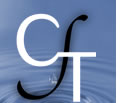 |
|||||||||||
Teaching as Inquiry, Experimentation, and Reflection
Designing a Teaching Plan
When designing a lesson plan, many instructors consider the following criteria:
-
Objectives - what do you want your students to be able to do after the lesson (e.g., state facts, apply concepts, analyze data, synthesis materials from several sources, evaluate various perspectives)?
-
Teaching Techniques - what format best serves your need to convey the material and meet your teaching objectives: lecture, discussion, small group activities, demonstration, etc.
-
Assessing Student Learning - how will you know that students have achieved the objectives: ask questions in class, administer a quiz or test, assign a project, etc.
Implementing a Teaching Plan
To effectively implement your teaching plan, consider all the details that help a class run smoothly:
-
do you have all necessary materials (chalk, marker pens, overhead transparency, etc.)
-
what other things are going on in students' lives at this time (many exams/papers in other classes, parents' weekend, etc.)
-
how much time do you want to allocate for each activity or portion of the material
-
do you need to arrange for guest speakers or finalize details on field trips, etc.
Assessing a Teaching Plan
Student or classroom assessment can be employed for many purposes. Most people are familiar with student assessment as a form of teacher evaluation to help teachers adjust teaching styles or course content. However, student feedback can also tell the instructor about students' comprehension of concepts and their level of engagement with course material. Instructors can use student feedback as a "trampoline" to jump into new topics or as an indicator that students need more time or a different approach with a particular subject. Two examples of Classroom Assessment Techniques, or CATs, are:
-
Background Knowledge Probe. (Moderate instructor effort; low student effort.) This is essentially a diagnostic pre-test to administer the first day of class and/or when you begin a new unit of instruction. It can consist of two or three short answer or essay questions or 15-20 multiple-choice items about students' attitudes and understanding. This CAT provides information not only on your students' prior knowledge but also on their motivation, beliefs, values, and, if you use open-ended questions, their writing skills. The results also tell you what material to cover and what existing knowledge you can use to map on new knowledge. Finally, probes activate students' prior knowledge, readying them for additional learning.
-
Muddiest Point. (Low instructor and student effort.) Very simply, ask your students to write down what they perceived as the most unclear point in a lecture, a homework assignment, a film, a demonstration, a discussion, etc. Reserve some time at the end of class to ask and answer questions, then collect the student responses. You can then clarify the muddy points in the next class. Perhaps the easiest CAT to implement, it can be used on the spur of the moment. Struggling students, who are uncomfortable asking questions publicly, find it to be a lifeline. Additionally, it enables you to see the material through your students' eyes, reminding you of the many ways they process and store information. Finally, knowing they will have to identify a muddy point induces students to pay closer attention in class.
For more information on other forms of student assessment, see Thomas Angelo and Patricia Cross, Classroom Assessment Techniques: A Handbook for College Teachers 2d. (San Francisco: Jossey-Bass Inc., 1993).
Reflecting on a lesson plan
Immediately after class is a good time to reflect on how the session went, what changes to make in the future, and what parts of the material to review next class period. Keeping notes in your teaching materials can save a lot of time in the future.
HOME | ABOUT CFT | PROGRAMS | SERVICES | RESOURCES
Center for Teaching |
General Questions? Web Site Questions? Copyright ©2009 |
